How to Successfully Upsell a Customer in 7 Steps
A 7-step guide on how to upsell a customer and increase sales.
Upselling is a sales tactic used to persuade a customer to buy a more expensive version of a product they already intended to purchase. In SaaS, the typical upsell is for a higher-priced subscription. In e-commerce, an upsell tends to come in the form of larger versions of an item or add-ons.
Digital tools have made upselling tactics more targeted and effective. Brands can send upsell offers through multiple channels, use data-driven insights to personalize product recommendations, and scale upselling campaigns with automated workflows.
3 channels for upselling
The typical customer journey involves multiple channels. A person may discover your brand in a physical mall, see ads for it on social media, buy through your app, and initiate a return in a live chat.
Ideally, you would focus on the channels with the highest level of customer engagement to upsell – which you would find by mapping out the customer journey. For example, if a customer never reads your emails, you would be wasting time and money trying to upsell them with an email campaign.
On-page or in-app
The moment a customer adds an item to their shopping cart, initiates the checkout process, or completes a payment, you have an opportunity to upsell. These actions are signals of the customer’s willingness to buy from your brand, and each product viewed or article read provides insight into their interests, needs, and preferences.
Email allows for flexibility when it comes to the timing and content of your upsell message. With an email marketing automation tool like SendGrid, you can upsell right after a sale as part of an order confirmation (even throwing in a discount code as an added encouragement).
Live chat
A live chat can function like a salesperson who anticipates a shopper’s needs. Say a customer has been browsing your product pages for five minutes. You start a chat offering to answer questions about your products or help them compare their options. Depending on the customer’s level of engagement, you can then offer a relevant add-on, based on what they’re browsing (e.g. product protection, a deal on a higher-tiered subscription, etc.).
How to upsell a customer in 7 steps
The first step in upselling a customer is to build out a strategy that works within the larger context of the customer journey. The last thing you want to do is annoy potential customers with too many redundant or irrelevant messages.
Now, let’s walk through how to upsell a customer in seven steps.
1. Upsell products that are relevant to the customer
The first step may seem obvious, but it’s essential. While upselling is meant to increase average order value and revenue, it should also act as a value-add for the customer.
To personalize upselling, you’ll need to have a holistic view of your customers. Based on their demographic, behavioral, and historical data – from the ads they click on to the products they view on your website – you should be able to glean their interests and needs.
To unify all these customer interactions into a single profile, you can use a CDP like Twilio Segment that has identity resolution capabilities. Once you’ve set up unified customer profiles, you can then start creating specific audience segments based on shared traits and behavioral patterns.
Say a customer belongs to a segment of health-conscious young professionals in New York City. Even if they haven't bought anything from you yet, you can look at the behavior of other customers in that same audience segment to predict what products they'd be most interested in.
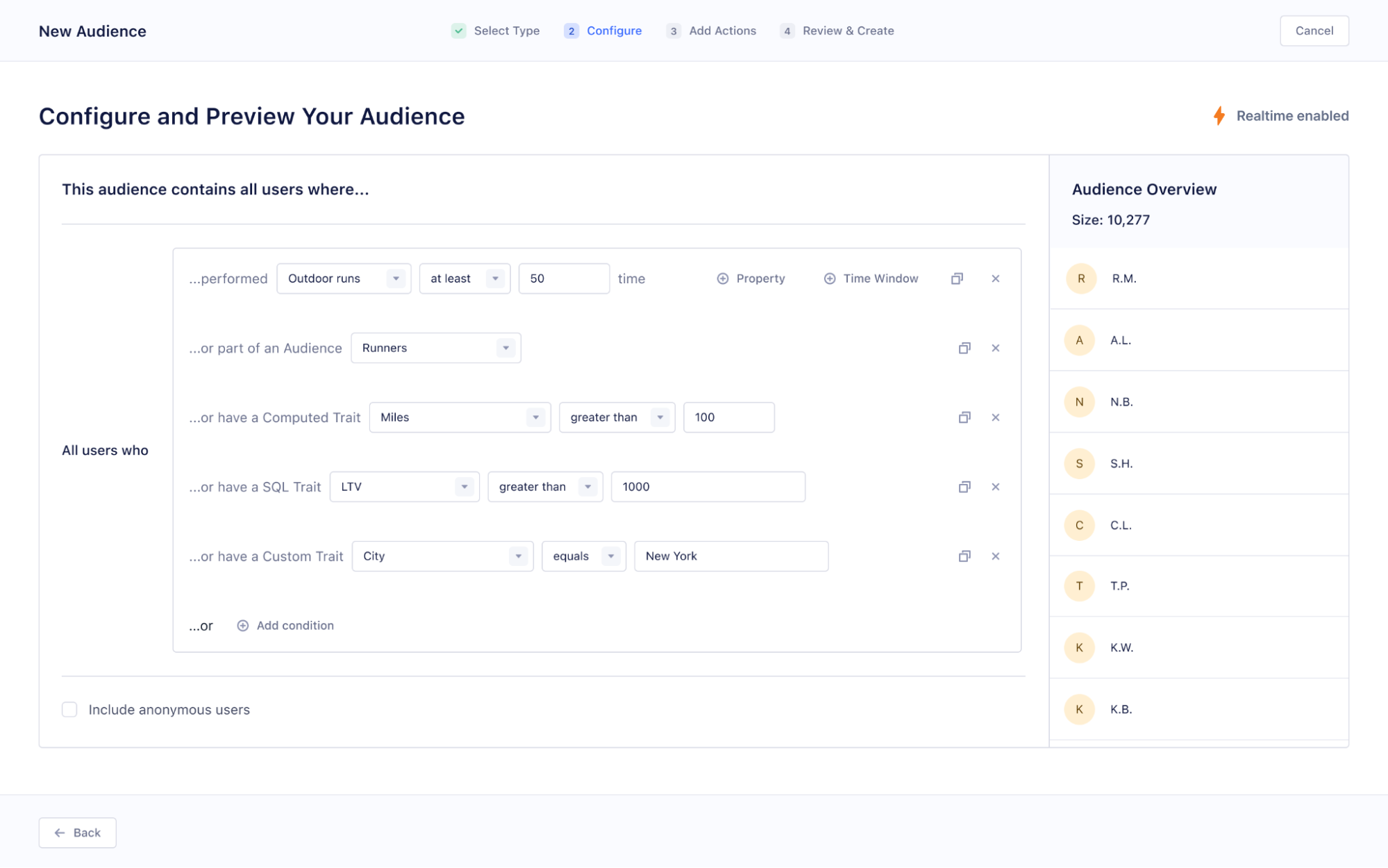
2. Offer a range of upselling options
You can upsell to a customer in several ways:
Offer a discount for a more expensive version of a product/subscription.
Suggest getting the item as part of a bundle
Offer customization
Recommend product protection (i.e., micro-insurance)
Suggest an extended subscription or service period
3. Compare the options head-to-head
Comparison tables are especially useful for subscription-based businesses. When a website visitor views your subscription page, they should see a side-by-side comparison of the different plan options. Highlight the advantages of getting the higher-priced subscription using checklists and vibrant colors, like how Google displays its Google One subscription plans.
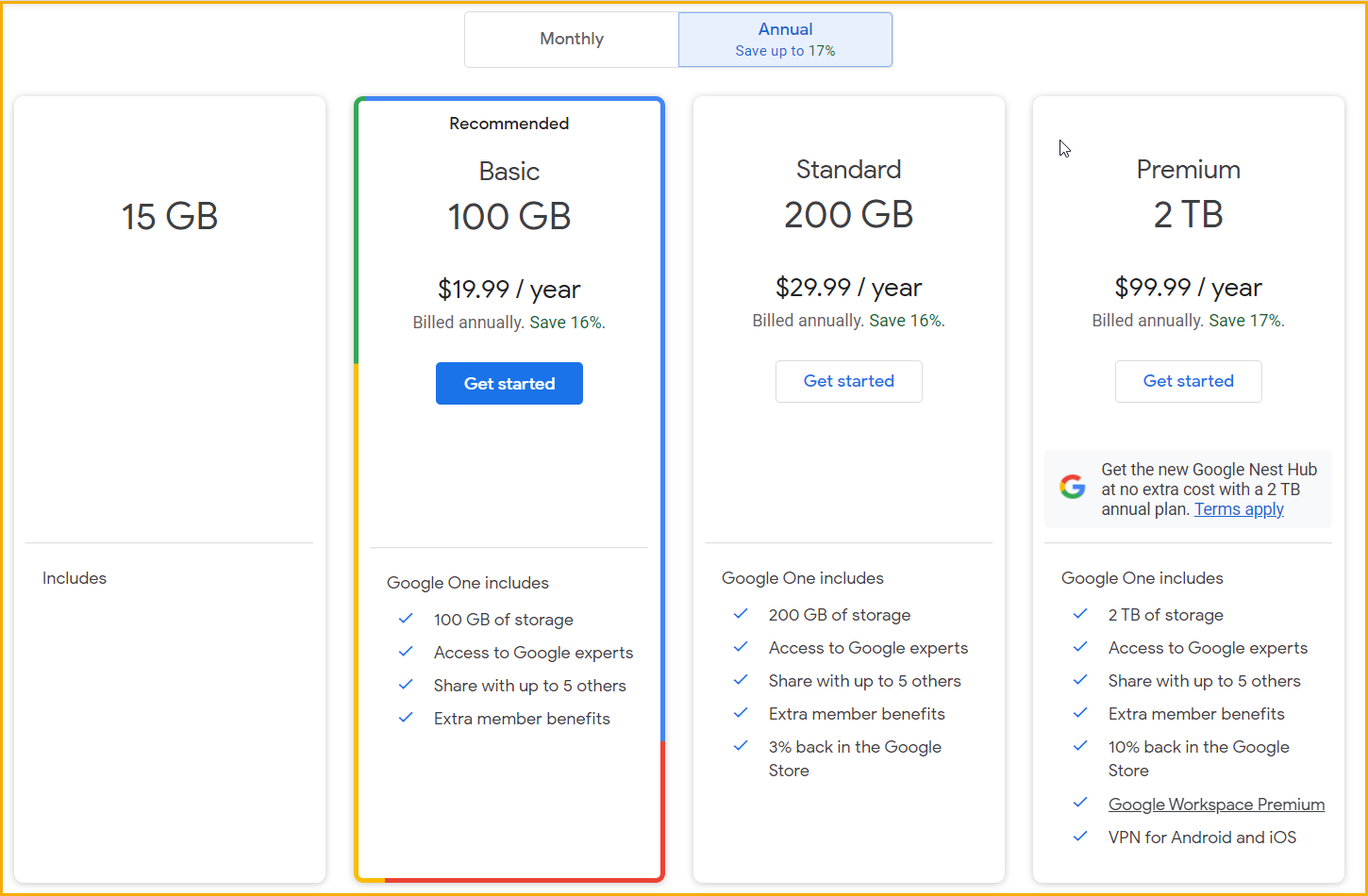
4. Demonstrate the value of what you’re upselling
Always emphasize how the customer will benefit from an upsell, like by getting more savings or accessing additional features.
Say you're selling a bottle of multivitamins. A bottle with 300 pills costs $24 ($.08 a pill), while a bottle with 400 pills costs $30 ($.075 a pill). Tell the customer that they’ll save $6 by getting the bigger bottle.
You can also frame your message in terms of loss aversion, a cognitive bias that explains why we perceive a loss as more painful than an equivalent gain. So, If you’re recommending a consumer get a monthly subscription service, show a table comparing what they’ll get from the recurring order (versus what they would lose if they forgo it). Show how much more they would spend on a one-time payment, and what they would give up in terms of customer perks.
5. Start on-page and follow up over email
Integrate upsell messages into your on-page shopping experience using an upselling app. You can display an upsell message on a pop-up with a countdown timer, on the checkout page, or on a thank-you page.
If the customer declines your on-page offer, try again when you send them a post-purchase email. Prioritize information the customer needs – like a summary of the order and a link for tracking the delivery. At the end of the email, show a couple of recommended products or service upgrades. You can also send a series of follow-up emails, which we’ll talk about next.
6. Use a drip email campaign to nurture customers with potential upsells
A drip email campaign is a series of emails you send to customers on a schedule based on the actions they take or don’t take. An upselling drip campaign might have a workflow like this:
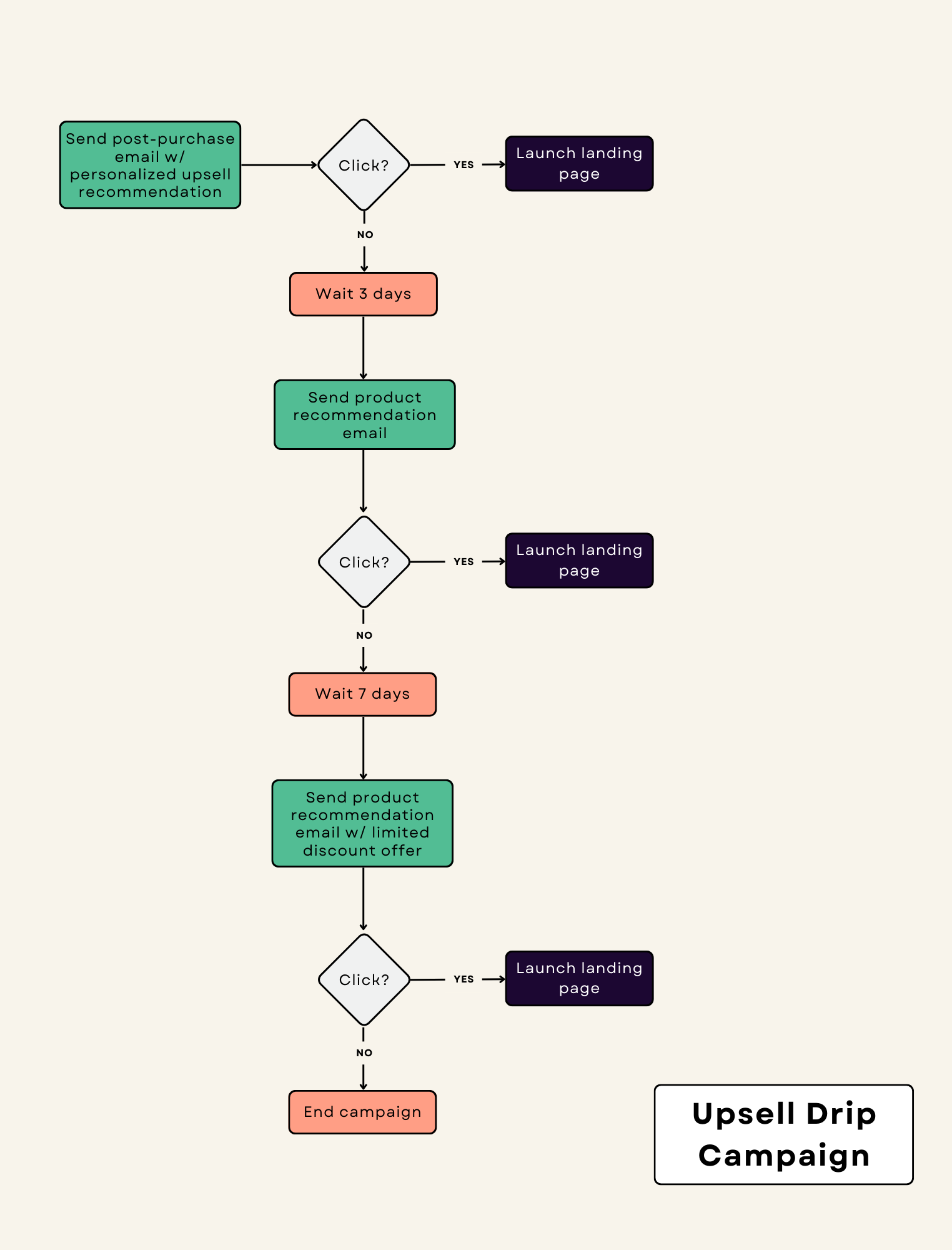
Set up an upsell drip campaign using an email marketing automation tool. Make your campaign more effective by tailoring it to different customer segments and using real-time behavioral triggers. You can do this by connecting your email marketing tool to your customer data platform.
7. Offer a deal – and add a sense of urgency
An opportunity can become more desirable when you realize you could lose it in the next 20 minutes. That’s loss aversion at play once again, and it’s the reason why businesses offer deals for a limited time. When offering an upsell deal, display an expiration date or a countdown timer along with the message.
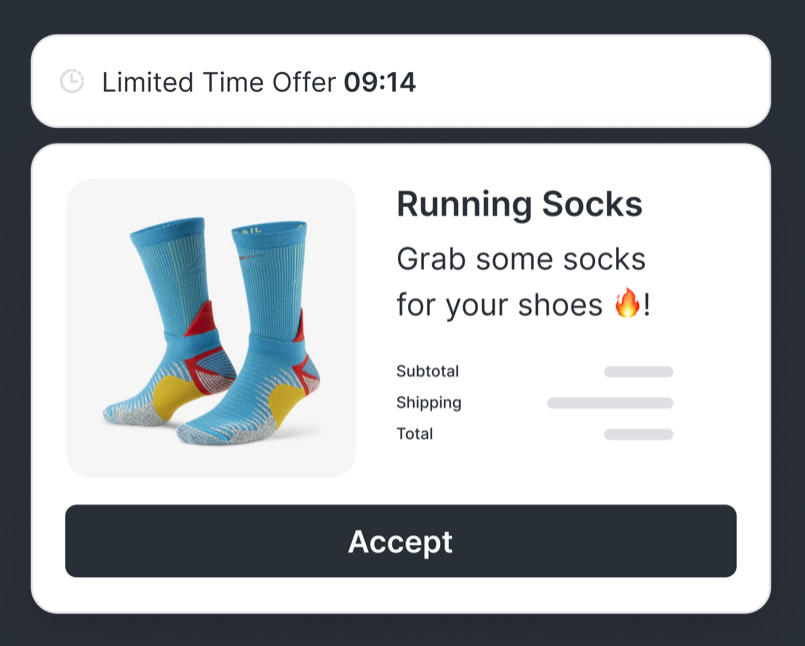
The deal doesn’t have to be a discount on an item’s unit price. Consider other offers, like a product bundle promo, an extra month of warranty, or double loyalty program points for taking the upsell offer.
Personalized upselling with Segment
Segment empowers businesses to spin up highly personalized audience segments and engage with those users across channels – to make the right offer at the right time. With Twilio Engage, teams are able to scale these efforts even further: using real-time behavioral events to ensure customer journeys evolve with each subsequent interaction.
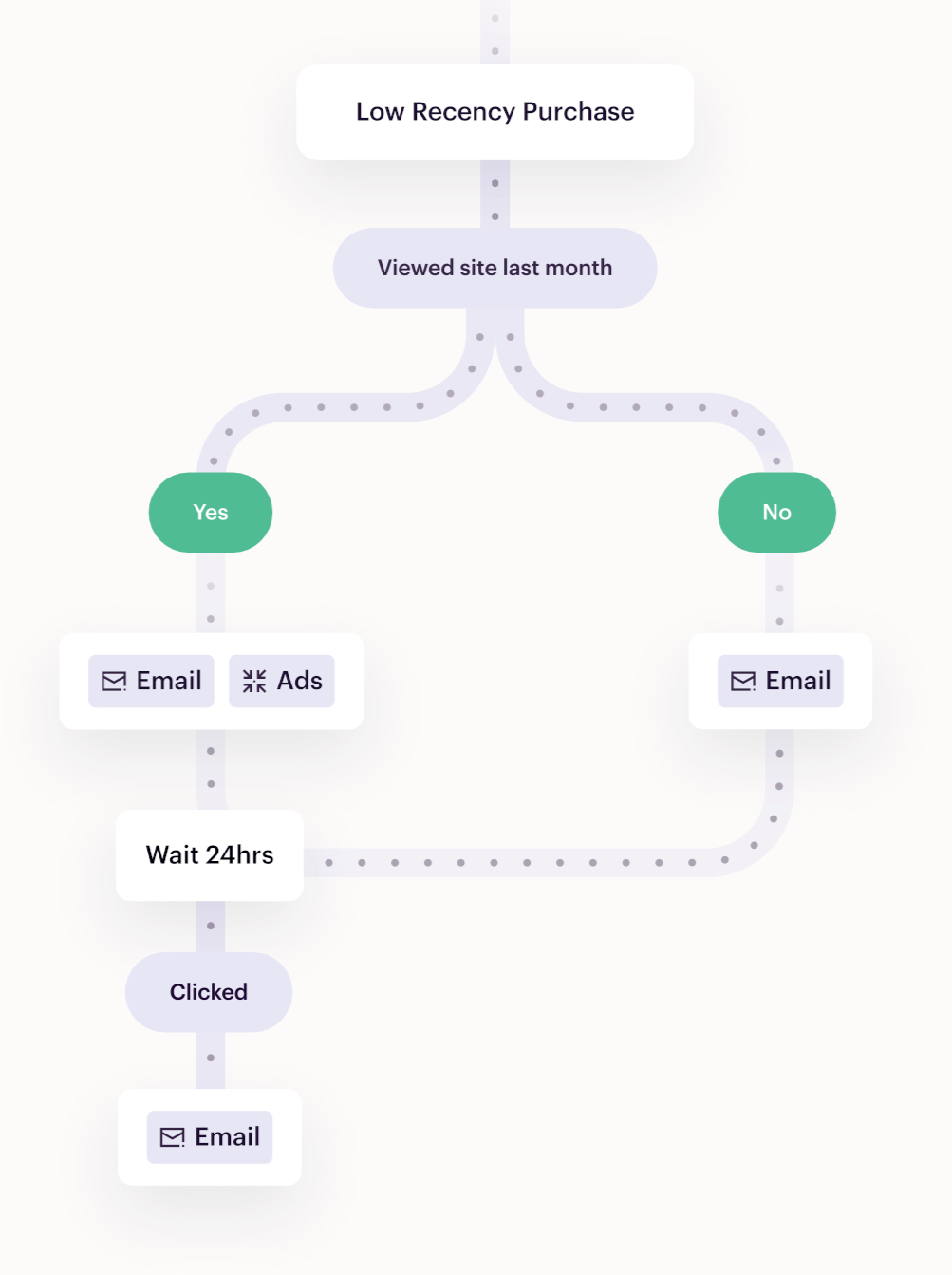
This makes Segment an incredible asset for companies launching upsell campaigns by providing data democratization to non-technical teams. Marketers can leverage unified customer profiles (that are updated in real time) to build their campaigns and audiences, without requiring engineering or analyst support.
And with Linked Profiles, businesses can also sync real-time data with objects stored in the data warehouse, for further enrichment and even better precision when it comes to personalization.
Fender is a great success story in this regard. They used Segment to unify their data and recognize users as they switched between channels. This allowed them to create more personalized and well-timed ads while also identifying when customer engagement was waning. The result was a 29% reduction in churn, and a 5% increase in customer acquisition.
Interested in hearing more about how Segment can help you?
Connect with a Segment expert who can share more about what Segment can do for you.